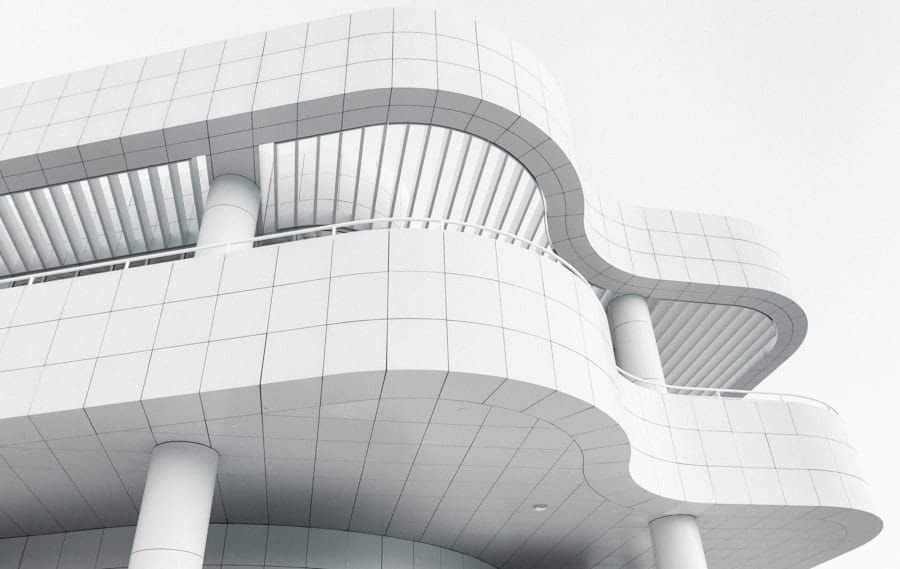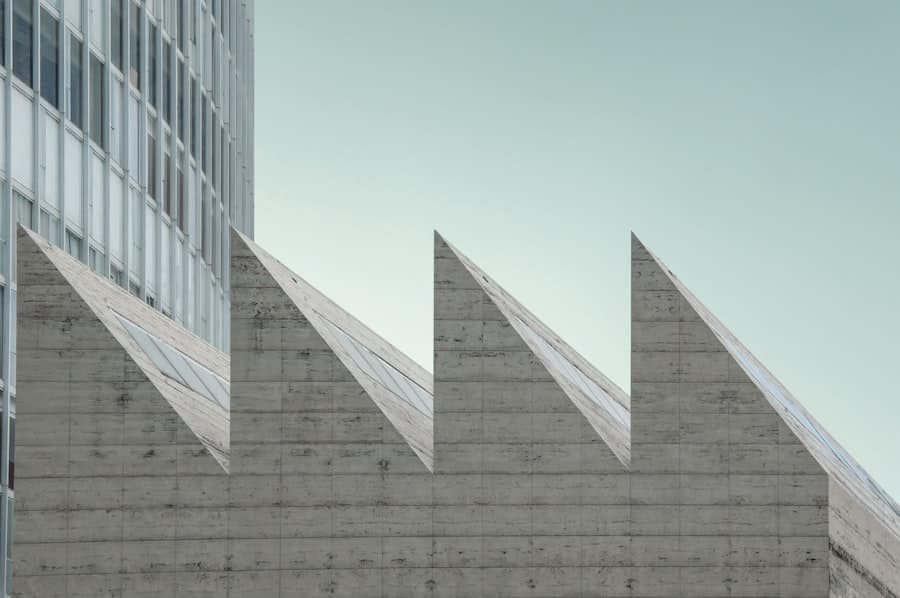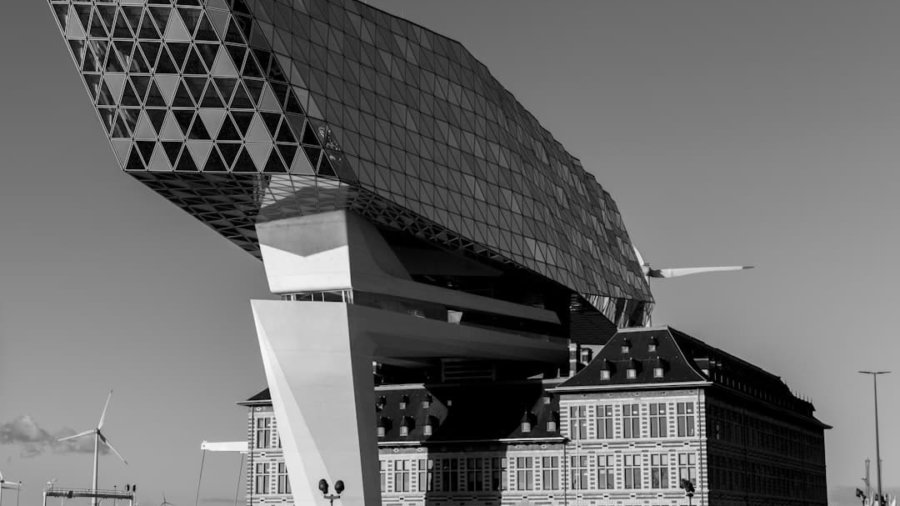Virtual Reality (VR) has emerged as a transformative technology in various fields, and architecture is no exception. The potential of VR in architecture lies in its ability to create immersive environments that allow architects, clients, and stakeholders to experience designs before they are built. This technology enables users to step inside a virtual model of a building, providing a sense of scale, space, and atmosphere that traditional 2D drawings or even 3D models cannot convey.
By simulating real-world conditions, VR allows architects to explore design concepts in a more intuitive manner, facilitating a deeper understanding of spatial relationships and design elements. Moreover, VR can significantly enhance the design process by enabling real-time modifications and iterations. Architects can visualize changes instantly, allowing for a more dynamic and responsive design workflow.
For instance, if a client requests alterations to a layout or material selection, architects can make adjustments on the fly and present the updated design in VR. This immediacy not only fosters creativity but also helps in identifying potential issues early in the design phase, ultimately leading to more refined and effective architectural solutions.
Key Takeaways
- VR in architecture offers immersive and interactive experiences for clients and architects, allowing for better visualization of designs.
- Challenges in implementing VR-driven architecture projects include high initial costs, technical expertise, and hardware and software compatibility issues.
- VR technology enhances collaboration and communication among architects, clients, and stakeholders, leading to better understanding and decision-making.
- VR visualization improves design decision-making by allowing architects to explore and iterate on designs in a more intuitive and immersive way.
- VR simulations streamline the construction process by identifying potential issues and conflicts before construction begins, saving time and costs.
Overcoming Challenges in Implementing VR-Driven Architecture Projects
Despite its numerous advantages, the integration of VR into architectural practice is not without challenges. One of the primary hurdles is the initial investment required for VR technology. High-quality VR hardware and software can be expensive, and many firms may hesitate to allocate budget resources toward these tools without a clear understanding of their return on investment.
Additionally, the learning curve associated with adopting new technology can be steep. Architects and designers must familiarize themselves with VR software and hardware, which may require training and adaptation time that could disrupt existing workflows. Another significant challenge is ensuring compatibility between VR tools and existing architectural software.
Many firms rely on established design programs like AutoCAD or Revit, and integrating these with VR platforms can be complex. Data transfer issues, software bugs, or lack of interoperability can hinder the seamless use of VR in architectural projects. To overcome these challenges, firms must invest in training and development while also seeking out software solutions that prioritize compatibility and user-friendliness.
Collaborating with technology providers to create tailored solutions can also help bridge the gap between traditional architectural practices and innovative VR applications.
Enhancing Collaboration and Communication with VR Technology

Collaboration is a cornerstone of successful architectural projects, and VR technology has the potential to revolutionize how teams communicate and work together. By creating a shared virtual environment, architects, engineers, and clients can engage in real-time discussions about design elements, spatial arrangements, and aesthetic choices. This immersive experience fosters a sense of presence that traditional communication methods—such as emails or video calls—cannot replicate.
Team members can walk through virtual spaces together, pointing out features and discussing modifications as if they were physically present in the same room. Furthermore, VR can facilitate collaboration across geographical boundaries. With remote work becoming increasingly common, teams can connect from different locations without the need for travel.
This capability is particularly beneficial for international projects where stakeholders may be dispersed across various countries. By utilizing VR platforms, teams can conduct virtual meetings within the context of their designs, allowing for more productive discussions that are grounded in the actual project environment. This not only enhances communication but also strengthens team cohesion as members share experiences in a virtual space.
Improving Design Decision-Making with VR Visualization
The decision-making process in architecture often involves weighing multiple design options against various criteria such as aesthetics, functionality, and sustainability. VR visualization provides architects with a powerful tool to enhance this process by allowing them to present multiple design alternatives in an immersive format. Clients can experience different layouts, materials, and lighting conditions firsthand, leading to more informed decisions based on their preferences and needs.
For example, when designing a public space such as a park or plaza, architects can create several design iterations that incorporate different landscaping elements or seating arrangements. By inviting clients to explore these options in VR, architects can gather valuable feedback that may not be as easily articulated through traditional presentations. This interactive approach not only empowers clients but also encourages architects to think critically about their designs as they receive real-time input from stakeholders.
Streamlining the Construction Process with VR Simulations
The construction phase of architectural projects is often fraught with challenges such as miscommunication, delays, and budget overruns. VR simulations can play a crucial role in streamlining this process by providing a detailed visualization of the construction workflow. By simulating construction sequences in a virtual environment, project managers can identify potential bottlenecks or conflicts before they arise on-site.
This proactive approach allows teams to address issues early on, reducing the likelihood of costly delays during actual construction. Additionally, VR can enhance safety training for construction workers by immersing them in simulated environments that replicate real-world conditions. Workers can practice navigating complex sites or handling equipment without the risks associated with live training sessions.
This not only improves safety awareness but also ensures that workers are better prepared for the challenges they will face on-site. By integrating VR into construction planning and training, firms can create more efficient workflows that ultimately lead to successful project completion.
Leveraging VR for Client Engagement and Feedback

Client engagement is essential for ensuring that architectural designs align with client expectations and requirements. VR technology offers an innovative way to involve clients in the design process by providing them with an interactive platform to explore their future spaces. Instead of relying solely on static images or 3D renderings, architects can invite clients to don VR headsets and walk through virtual models of their projects.
This immersive experience allows clients to visualize their spaces from various perspectives and gain a better understanding of how different design elements come together. Moreover, gathering feedback through VR experiences can be more effective than traditional methods. Clients can express their thoughts on specific features or layouts while experiencing them firsthand, leading to more nuanced feedback that architects can incorporate into their designs.
For instance, if a client feels that a particular room is too cramped during their virtual walkthrough, architects can quickly assess spatial adjustments based on this input. This iterative feedback loop fosters collaboration and ensures that clients feel heard throughout the design process.
Maximizing Efficiency and Cost-Savings through VR-Driven Architecture Projects
The integration of VR into architectural projects has the potential to maximize efficiency and generate significant cost savings over time. By streamlining design processes and enhancing collaboration among stakeholders, firms can reduce the time spent on revisions and iterations. The ability to visualize designs in an immersive environment allows for quicker decision-making and minimizes the risk of costly changes during construction due to misunderstandings or miscommunications.
Additionally, VR can help identify potential issues before they escalate into expensive problems on-site. For example, by simulating construction workflows and visualizing potential conflicts between different systems—such as plumbing and electrical installations—architects can make informed adjustments early in the design phase. This proactive approach not only saves time but also reduces material waste and labor costs associated with rework or corrections during construction.
Future Trends and Innovations in VR-Driven Architecture
As technology continues to evolve, the future of VR in architecture holds exciting possibilities for innovation and advancement. One emerging trend is the integration of artificial intelligence (AI) with VR platforms to create adaptive environments that respond to user interactions in real-time. For instance, AI algorithms could analyze user behavior within a virtual space and suggest design modifications based on preferences or usage patterns.
This level of personalization could lead to more user-centric designs that cater specifically to individual needs. Another promising development is the use of augmented reality (AR) alongside VR technology to create hybrid experiences that blend digital information with physical environments. Architects could overlay virtual elements onto real-world sites during site visits or client meetings, providing context for proposed designs while allowing stakeholders to visualize how new structures will fit into existing landscapes.
This combination of AR and VR could revolutionize how architects present their ideas and engage with clients. In conclusion, the potential of VR in architecture is vast and multifaceted, offering opportunities for enhanced collaboration, improved decision-making, streamlined construction processes, and increased client engagement. As firms continue to embrace this technology and overcome implementation challenges, the architectural landscape will undoubtedly evolve into one that prioritizes innovation and efficiency through immersive experiences.
In exploring the insights from VR-driven architecture projects, it’s essential to consider how innovative processes can be applied across various fields. A related article that delves into the importance of reimagining traditional methods to foster success is To Buy Time for a Failing Startup, Recreate the Engineering Process.
By examining these parallels, professionals can gain a broader understanding of how technological advancements can drive progress and innovation in their respective industries.
FAQs
What is VR-driven architecture?
VR-driven architecture refers to the use of virtual reality technology in the field of architecture and design. It allows architects, designers, and clients to experience and interact with architectural designs in a virtual environment, providing a more immersive and realistic understanding of the space.
What are some benefits of using VR in architecture projects?
Some benefits of using VR in architecture projects include enhanced visualization of designs, improved communication between stakeholders, better understanding of spatial relationships, early identification of design flaws, and the ability to experience the design before it is built.
What are some lessons learned from VR-driven architecture projects?
Lessons learned from VR-driven architecture projects include the importance of user experience design, the need for high-quality hardware and software, the value of collaboration and communication, the potential for cost and time savings, and the impact on client satisfaction and project success.
How does VR technology impact the architecture industry?
VR technology has a significant impact on the architecture industry by revolutionizing the design process, improving client engagement, streamlining decision-making, reducing errors and rework, and ultimately enhancing the overall quality of architectural projects.

